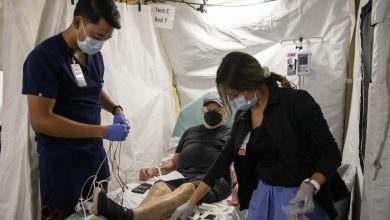Dan Marino Reveals Liver Disease Diagnosis: What Fans Need to Know

When Hall of Famer Dan Marino recently stepped forward with his health news, it caught the attention of fans and medical observers alike. Dan Marino reveals liver disease diagnosis isn’t just another celebrity health story—it’s a reminder of how quietly serious conditions can develop, even in people who seem to be in great shape. Below, I breakdown what he disclosed, what the disease is, implications, and what lessons fans can draw from his experience.
Who is Dan Marino
Dan Marino is one of the most celebrated quarterbacks in NFL history. Playing for the Miami Dolphins from 1983 to 1999, he set numerous passing records, was an MVP, and made the Pro Bowl multiple times. After his retirement, Marino remained a public figure—not just for his football achievements but also for his philanthropic work and insights into physical health and wellness.
Given his reputation for fitness and discipline in his playing days, the news that Marino has been dealing with a fatty liver disease diagnosis reminds many that serious health challenges can affect anyone.
What Did Dan Marino Reveal?
- Marino disclosed that he has been living with a liver condition known medically as Metabolic Dysfunction-Associated Steatohepatitis (MASH), which was formerly known as nonalcoholic fatty liver disease.
- He first learned of the issue during a routine checkup in 2007. At the time, his symptoms were mild—mainly fatigue and noticing he wasn’t able to maintain the same workout consistency.
- His doctors told him that the condition could be reversible or at least manageable, provided significant lifestyle changes were made.
- Key changes he’s made include adopting a more disciplined diet (including more Mediterranean diet elements), cutting back on wine, pizza, candy, ice cream, and similar high-calorie or processed items. He also increased physical activity, doing things like walking, biking, working out with a former teammate, and overall being more consistent with exercise.
- Marino says that his condition has been stable in recent years, with regular monitoring (ultrasounds etc.), and he is optimistic that things will continue to improve.
Understanding MASH / What It Means
When we say MASH (Metabolic Dysfunction-Associated Steatohepatitis), we are talking about a liver condition characterized by:
- Fat accumulation in the liver beyond what is healthy.
- Inflammation of liver tissue caused by that fat.
- Potential for progression, if untreated, to more serious liver damage, including fibrosis, cirrhosis, and possibly liver cancer.
MASH used to be called “nonalcoholic fatty liver disease” (NAFLD) or nonalcoholic steatohepatitis (NASH) in older literature. The key point is that it doesn’t require alcohol consumption to develop—it is tied strongly to metabolic factors: obesity, type 2 diabetes / insulin resistance, high cholesterol/triglycerides, diet, sedentary lifestyle, etc.
Timeline & Symptoms in Marino’s Case
- 2007: Routine check-up. Marino felt only slightly fatigued; he noted he was less active than during his NFL career.
- Doctors discovered fatty liver changes and diagnosed him with MASH.
- Over the years since then, Marino made dietary changes, increased exercise, and has stayed under medical supervision.
Symptoms for many people with this condition are subtle or nonspecific—fatigue, mild discomfort, sluggishness—and often aren’t enough to raise red flags until more serious damage has occurred. In Marino’s case, early detection helped.
Why Marino Going Public Matters
There are several reasons Dan Marino reveals liver disease diagnosis is more than personal health news:
- Awareness: MASH / fatty liver diseases are relatively under‐recognized in the public consciousness. Many people have some degree of fatty liver without knowing it. A high-profile figure speaking openly can help raise awareness.
- Early Diagnosis Potential: Since symptoms are often subtle, many people delay checking for or treating the condition. Marino’s case illustrates that routine checkups caught something that might’ve otherwise been missed until it progressed.
- Lifestyle as a Powerful Tool: Marino’s improvements show that changes in diet, weight loss, consistent physical activity, and routine monitoring can make a big difference—possibly reversing or stopping progression in many cases.
- Encouragement for Others: People who are experiencing mild symptoms or have metabolic risk factors may feel motivated to take action earlier.
Risks, Complications, and What Fans Should Know
For anyone learning from Marino’s experience, here are key medical and practical points about MASH / fatty liver disease:
- Progression: If left untreated, MASH can lead to fibrosis (scarring), then cirrhosis. Cirrhosis impairs liver function and increases the risk of liver failure. There’s also a risk of hepatocellular carcinoma (primary liver cancer).
- Risk factors: Being overweight or obese; metabolic syndrome (insulin resistance, high blood pressure, high blood sugar, abnormal cholesterol/triglyceride levels); sedentary lifestyle; poorer dietary habits; possibly genetic predisposition.
- Diagnosis: Often through imaging (ultrasound, sometimes MRI), blood tests (liver enzymes, etc.), and sometimes liver biopsy to assess severity. Regular monitoring is essential once disease is found.
- Treatment & Management: No specific drug that cures MASH in all patients yet (though research is ongoing). The mainstays are lifestyle changes:
- Weight loss (even moderate weight loss can help)
- Diet changes (reducing processed foods, refined sugars; emphasizing vegetables, fruits, lean protein; Mediterranean diet is often recommended)
- Regular physical activity — aerobic plus resistance training help
- Controlling comorbid conditions: if there’s insulin resistance / diabetes, high blood lipids, etc.
- Avoiding or limiting substances that stress the liver (alcohol, some medications, excess sugar)
- Prognosis: Many people with early-stage MASH improve or stabilize with attentive care. For others, if disease is more advanced when caught, there may be irreversible damage. Marino’s case is encouraging because he was diagnosed early and has kept up with lifestyle changes and monitoring.
What Fans Can Do: Lessons from Marino
If you’ve been following Marino’s story, here are some takeaways you might want to apply in your own life:
- Don’t ignore mild symptoms
Fatigue, lack of energy, mild discomfort—on their own, they can feel insignificant. But these signs, especially if combined with weight gain or metabolic issues, may merit a check‐up. - Get routine physicals
Regular doctor’s checkups can catch issues early—even when you don’t feel sick. - Be proactive with lifestyle
Marino didn’t wait until symptoms were severe. He made changes involving diet, exercise, consistency. Fans should recognize the power of lifestyle in disease prevention and management. - Support system helps
Marino credits his wife, family, friends, and even former teammates for helping him maintain habits (exercise, appointments, consistency). Having a support structure makes following through with lifestyle changes more sustainable. - Monitor health markers
Keep track of weight, waist circumference, blood sugar, cholesterol, liver enzyme tests if appropriate. If you have risk factors (overweight, metabolic syndrome, family history), ask your doctor about screening for liver health. - Stay consistent, not perfect
Marino emphasizes making changes and staying consistent over long periods—not expecting perfection. Some indulgences (e.g. occasional sweets) may be okay if overall lifestyle is healthy.
Why This Diagnosis Matters Beyond Marino
- MASH / fatty liver disease is becoming increasingly common globally. As rates of obesity, type 2 diabetes, metabolic syndrome grow, more people are at risk. The condition can be a silent epidemic.
- Public figures like Marino sharing their stories help destigmatize liver disease (often associated in people’s minds with alcohol or drug abuse), clarify misunderstandings, and encourage preventative health behavior.
- The medical community emphasizes that early detection is often the turning point. Marino’s story underscores that need.
Conclusion
Dan Marino reveals devastating health issue. Even elite athletes aren’t immune to health issues, especially when lifestyle changes shift after retiring from professional sports. Marino’s journey:
- Demonstrates the importance of regular checkups
- Shows that mild symptoms shouldn’t be ignored
- Emphasizes consistent diet & exercise as critical tools
- And provides hope: the disease, particularly early on, can often be managed or reversed.
For fans, the key takeaway is that good health is a long-term project. If Marino can do it, with all the demands of his past career and public life, then many of us have the capacity to take steps today to protect our liver and our overall wellness.




